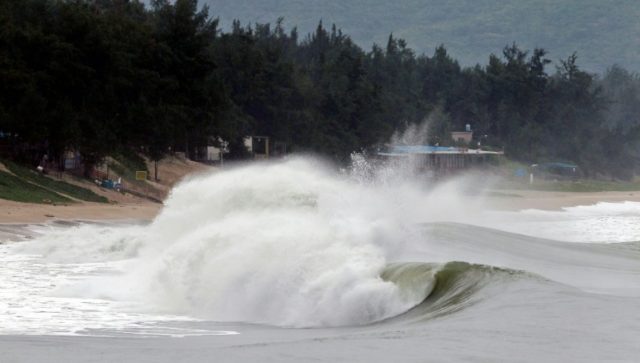Hong Kong (AFP) – A major tsunami struck China’s southern coast in 1076 causing “drastic cultural decline”, Chinese researchers say, in a study with implications for a densely populated region boasting multiple coastal nuclear power plants.
There is a growing body of scientific evidence suggesting an earthquake in the Manila Trench sent a wall of water coursing into what is now China’s Guangdong province around a thousand years ago.
Now scientists believe they have narrowed down the date to an exact year — 1076 — and say the new data should set alarm bells ringing over whether enough is being done to defend against future tsunamis.
“This study confirms the risk of tsunamis in the South China Sea,” the teams from the University of Science and Technology and East China Normal University wrote in January’s issue of Chinese Science Bulletin.
“Such risk should be considered in future planning and construction of nuclear power plant, harbor and petroleum reserve structures on the coastlines of China,” they added.
A number of nuclear power plants sit on China’s southern coast including at Fuqing, Daya Bay and a soon-to-open plant at Taishan.
The wider area is also one of the world’s most densely populated regions and includes multiple major coastal cities such as Hong Kong, Macau, Xiamen, and Quanzhou.
The vulnerability of nuclear power plants to seismic events has become a major cause for concern ever since a 2011 earthquake and subsequent tsunami crippled Japan’s Fukushima power plant, the worst nuclear accident since Chernobyl.
The Chinese research team first found evidence of a destructive historical wave on Dongdao Island, located in the middle of the South China Sea, in 2013.
They discovered rocks and corals that had been moved 200 metres from the shoreline and concluded only a major force of water could have done so.
Another team found shards of ceramics in tsunami sediment from the Song Dynasty (960-1279) on Nan’ao island, some 250 kilometres (155 miles) up the coast from Hong Kong’s eastern side.
Professor Gao Shu at the East China Normal University told Xinhua that the southeast tip of the island used to be a town with official kilns for making porcelain.
Researchers struggled to find any archaeological artefacts from after the suspected wave until the later Ming dynasty.
They also found a shipwreck with 20,000 coins from around the time the tsunami might have struck.
“This cultural evidence indicates a drastic cultural decline caused by the tsunami,” they wrote.
China has begun moves to gather data in the South China Sea about potential tsunami threats, deploying early warning buoys off the the Manila Trench last year.

COMMENTS
Please let us know if you're having issues with commenting.